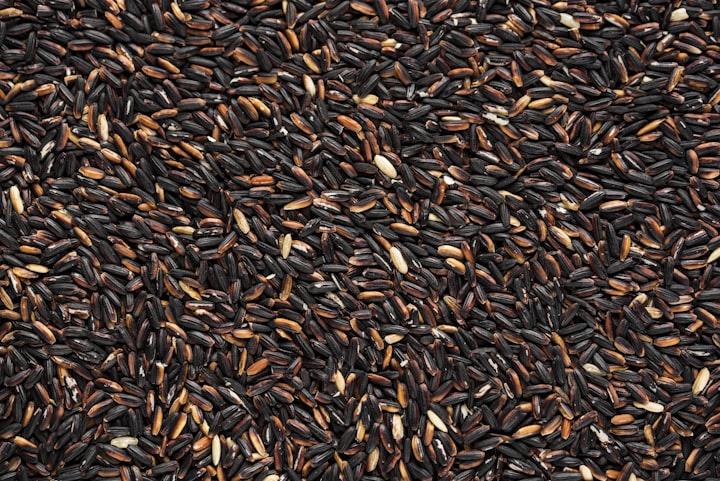
The Remarkable Uses of Black Rice for Human Health: A Comprehensive Guide
Introduction
Black rice, also known as forbidden rice, has been consumed for centuries and cherished for its unique flavor, nutritional benefits, and potential health advantages. With its distinct black color, this variety of rice offers a wide array of uses beyond traditional white or brown rice. In this article, we explore the remarkable uses of black rice for human health and provide insights on how to incorporate it into your diet.
1. Nutritional Powerhouse
Black rice is a nutritional powerhouse, packed with essential nutrients that can contribute to a balanced and healthy diet. Some key nutritional components found in black rice include:
(a)Antioxidants: Black rice is rich in anthocyanins, which are potent antioxidants. These compounds help protect the body against free radicals, reducing the risk of chronic diseases like heart disease and certain types of cancer.
(b)Fiber: Black rice is a great source of dietary fiber, which aids in digestion, regulates blood sugar levels, and promotes a feeling of fullness, making it an excellent choice for weight management.
(c)Vitamins and Minerals: This rice variety contains essential vitamins and minerals, including vitamin E, vitamin B6, iron, magnesium, and zinc. These nutrients play crucial roles in maintaining overall health and well-being.
2. Health Benefits
Incorporating black rice into your diet can provide various health benefits, such as:
(a)Heart Health: The antioxidants present in black rice help reduce inflammation and lower the risk of heart disease. Additionally, the high fiber content can help maintain healthy cholesterol levels and promote cardiovascular well-being.
(b)Digestive Health: The fiber in black rice supports healthy digestion, prevents constipation, and promotes bowel regularity. It can also help in preventing digestive disorders such as diverticulosis and hemorrhoids.
(c)Weight Management: The combination of fiber and nutrients in black rice helps keep you feeling fuller for longer, preventing overeating and aiding in weight management.
(d)Diabetes Management: Black rice has a lower glycemic index compared to white rice, meaning it has a slower impact on blood sugar levels. Including black rice in a balanced diet may help manage blood sugar levels, making it a suitable choice for individuals with diabetes.
3. Culinary Uses
Black rice can be used in various culinary preparations to add a unique twist to your meals. Here are a few ideas for incorporating black rice into your diet:
(a)Side Dishes: Cooked black rice can be served as a flavorful side dish alongside grilled meats, roasted vegetables, or stir-fried dishes.
(b)Salads: Add cooked black rice to salads to enhance both taste and visual appeal. Its nutty flavor and chewy texture can provide a delightful contrast to fresh vegetables and leafy greens.
(c)Puddings and Desserts: Black rice can be used to create delicious and nutritious desserts. Simmer it with coconut milk and a touch of sweetener to make a delightful black rice pudding, or use it as a topping for fruit bowls and parfaits.
(d)Stir-fries: Include black rice in stir-fried dishes to give them an exotic twist. The rice's color and texture can bring a unique element to vegetable, tofu, or shrimp stir-fries.
4. Preparation Tips
To prepare black rice for consumption, follow these simple steps:(a)Rinsing: Rinse the black rice under cold water to remove any impurities or debris.
(b)Soaking: Soak the rice in water for at least 30 minutes or up to overnight. This step helps soften the grains and reduce cooking time.
(c)Cooking: In a saucepan, combine soaked black rice with water in a 1:2 ratio (1 cup rice to 2 cups water). Bring to a boil, then reduce heat, cover, and simmer for about 30-40 minutes or until the rice is tender and the liquid is absorbed.
(d)Resting: Once cooked, let the black rice rest for 5-10 minutes before fluffing it with a fork.
5. Other Potential Uses and Considerations
Apart from its nutritional and culinary uses, black rice has also gained attention for its potential therapeutic applications and considerations:
(a)Skin Health: Black rice extract is increasingly used in skincare products due to its high antioxidant content. It is believed to help protect the skin against aging, promote a healthy complexion, and reduce inflammation.
(b)Allergies and Sensitivities: While black rice is generally safe for consumption, individuals with allergies or sensitivities to grains should exercise caution. It is advisable to consult with a healthcare professional before incorporating black rice into your diet if you have any concerns.
(c)Organic and Non-GMO Varieties: Opting for organic and non-GMO black rice ensures that you are consuming a product free from synthetic pesticides and genetically modified organisms, if these considerations align with your dietary preferences.
(d)Culinary Exploration: Black rice can be an exciting ingredient to experiment with in the kitchen. From sushi rolls and rice bowls to stuffed peppers and risottos, the versatility of black rice opens up a world of culinary exploration.
6. Black Rice in Traditional Medicine and Cultural Significance
In addition to its culinary and health-related uses, black rice holds significant cultural and historical importance in various regions. It has been an integral part of traditional medicine systems, particularly in Asia, where it is believed to possess medicinal properties. Some traditional uses and cultural significance of black rice include:
(a)Traditional Chinese Medicine (TCM): In TCM, black rice is associated with strengthening the kidneys, nourishing blood, and supporting overall vitality. It is often used in tonics and herbal remedies to address conditions such as anemia, weakness, and menstrual disorders.
(b)Ayurveda: In Ayurvedic medicine, black rice is considered cooling and balancing for the body. It is believed to pacify Pitta dosha (the fire element) and is used to promote digestion, reduce inflammation, and support liver health.
(c)Cultural Symbolism: Black rice has symbolic importance in certain cultures and ceremonies. In some Asian countries, it is associated with abundance, prosperity, and good luck. It is often used in festive dishes and special occasions to bring about positive energy and blessings.
7. Where to Find Black Rice
Black rice can be found in various forms, including whole grains, flour, and even black rice-based products. Here are some places where you can typically find black rice:
(a)Grocery Stores: Many well-stocked grocery stores carry black rice in the rice or international food sections. Look for both organic and conventional options, depending on your preference.
(b)Specialty Stores: Specialty stores that focus on natural and organic foods or international ingredients often stock black rice. Check local health food stores, Asian markets, or gourmet food shops for a wider selection.
(c)Online Retailers: Numerous online retailers offer a wide range of black rice products, including whole grains, flour, and specialty items. Shopping online provides convenience and allows you to explore different varieties and brands.
8. Black Rice in Alternative Medicine and Research
In recent years, black rice has gained attention in alternative medicine practices and has been the subject of scientific research. Here are some noteworthy findings and ongoing investigations:
(a)Anticancer Properties: Black rice contains compounds with potential anticancer properties, such as anthocyanins and phytochemicals. Studies have shown that these compounds may help inhibit the growth of cancer cells and reduce the risk of certain types of cancer, including breast, colon, and liver cancer.
(b)Anti-Inflammatory Effects: The antioxidants present in black rice have been found to possess anti-inflammatory properties. Chronic inflammation is linked to various health conditions, including heart disease, diabetes, and arthritis. Incorporating black rice into the diet may help reduce inflammation and promote overall well-being.
(c)Gut Health and Microbiota: Preliminary studies suggest that black rice may have a positive impact on gut health and the diversity of gut microbiota. The fiber content in black rice acts as a prebiotic, nourishing beneficial gut bacteria and supporting a healthy digestive system.
(d)Antidiabetic Potential: Black rice has shown promise in managing diabetes and improving insulin sensitivity. Research indicates that the anthocyanins and fiber in black rice contribute to better glycemic control, making it a favorable choice for individuals with diabetes or those aiming to prevent the condition.
(e)Cardiovascular Health: Regular consumption of black rice has been associated with improved cardiovascular health markers, including reduced LDL cholesterol levels and enhanced endothelial function. These effects can help lower the risk of heart disease and improve overall heart health.
(f)Neuroprotective Properties: Some studies have suggested that black rice extracts may possess neuroprotective properties, offering potential benefits for brain health and cognitive function. Further research is needed to explore the specific mechanisms involved.





Comments
There are no comments for this story
Be the first to respond and start the conversation.